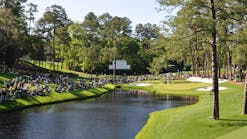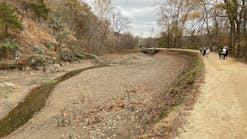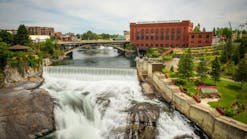San Antonio River Authority, LAN, and RESPEC Recipients of WEF Project Excellence Award
HOUSTON (July 17, 2020) — The Water Environment Federation (WEF) has selected the San Antonio River Authority (SARA), civil engineering firm Lockwood, Andrews & Newnam Inc. (LAN), and integrated solutions partner RESPEC as the recipients of the 2020 Project Excellence Award. The award will be presented virtually during the WEF Award Celebration ceremony on October 7.
WEF's annual Project Excellence Award pays tribute to excellence and innovation in the execution of projects and programs in the water sector. A panel of judges select projects based on the complexity of the water sector problem, future value to the water sector, innovation, sustainability considerations, meeting the owning agency's needs, and contribution to the well-being of people and communities.
In recent years, the selection and implementation of Best Management Practices (BMPs) and low-impact development (LID) strategies to address urban runoff pollution have become important components of holistic watershed master planning and stormwater management. However, these strategies have been limited to qualitative planning due to the lack of suitable tools to conduct a quantitative assessment. As a result, the effectiveness of the BMP/LID practices could only rely on follow-up long-term monitoring to verify, and there is, in general, a lack of planning effort prior to implementing BMPs or LID.
To help address these issues and support compliance with increasing water quality regulations, professional engineers with SARA, LAN, and software developers with RESPEC (formerly AQUA TERRA Consultants) created a number of innovative water quality modeling tools to allow quantitative water quality master planning and BMP/LID prioritization for several major watersheds in the San Antonio River Basin, including Salado Creek, Leon Creek, Medina River, and Upper San Antonio River watersheds.
Under the sponsorship and direction of SARA, the LAN team developed the following tools and enhancements:
- SARA Water Quality Modeling Standards to ensure consistent development and calibration of water quality models
- Developed and calibrated water quality models to identify impaired water bodies (locations, timing, and constituents)
- SARA Load Reduction Tool to determine percent load reductions needed to achieve selected screening levels for each of the selected constituents on a sub-basin basis
- SARA BMP Tool to determine the optimal (minimal cost) combination of the types and numbers of BMPs and LID needed to achieve the required load reductions
- SARA LP3 Tool to determine the percent BMP implementation needed to achieve compliance using the statistical Log-Pearson Type III (LP3) distribution
- BMP Ranking Matrix to help evaluate factors impacting the selection of BMP sites for Green Stormwater Infrastructure (GSI)
“These water quality models and tools greatly enhance our abilities to conduct holistic watershed master planning, manage urban runoff, and improve the quality of life of our communities. This project is a success story and great example of San Antonio River Authority’s effort to be Leaders in Watershed Solutions.” said Dr. Sheeba M Thomas Dominguez, P.E., PMP, CFM, senior technical engineer of SARA.
“The models and tools developed are on the cutting edge of the water quality modeling profession nationwide and perhaps worldwide,” said Dr. Yu-Chun Su, P.E., CFM, CPSWQ, CPESC, environmental and water resources engineering technical director of LAN.
“These tools provide water and river authorities, communities, and stormwater professionals around the country a new and more effective way to address water quality issues in their communities,” said Dr. Ka Leung Lee, P.E., CFM, CPSWQ, senior stormwater engineer of LAN and a key modeler of the project.
“The open-source tools we developed represent an ongoing professional commitment by LAN, RESPEC, and SARA to advance the water quality modeling industry,” said Dr. Russell Persyn, P.E., CFM, vice president at RESPEC.
Using these SARA models and tools, water quality agencies and stormwater professionals can now determine the optimal combinations of BMPs/LID to accomplish their goals and save substantial stormwater infrastructure and management costs. Already, these efforts have helped improve stormwater management in Salado Creek, Leon Creek, and Upper San Antonio River watersheds. These include identifying priority sub-basins for the development and implementation of BMP siting plans.
Furthermore, the results from these models could potentially help the US Environmental Protection Agency and state agencies to determine the BMPs/LID needed to delist impaired water bodies around the country (or to determine if delisting is possible or not using BMPs/LID strategies alone).
In the long run, applying these models and tools will enable water authorities and stormwater professionals to effectively manage stormwater runoffs as close as possible to the source, thereby creating more sustainable watersheds, improving public health and quality of life, enhancing natural habitats, supporting public recreation as well as boosting the local economy.






